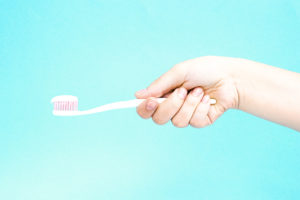 You may think that as long as you’re brushing your teeth twice each day for two minutes at a time that you’re in good shape to protect your oral health. However, bad brushing habits can make your oral hygiene routine much less effective. In fact, in some cases, such issues may actually be harming your teeth. It’s important to recognize these bad habits so that you can change them. Consult with your dentist if you see anything in this list that might apply to you.
You may think that as long as you’re brushing your teeth twice each day for two minutes at a time that you’re in good shape to protect your oral health. However, bad brushing habits can make your oral hygiene routine much less effective. In fact, in some cases, such issues may actually be harming your teeth. It’s important to recognize these bad habits so that you can change them. Consult with your dentist if you see anything in this list that might apply to you.
How Bad Brushing Technique Can Harm Your Teeth
You can actually damage your teeth in a number of ways if you’re not brushing correctly. You may either do an incomplete job of cleaning or cause premature wear and tear on your teeth. Therefore, it’s important to evaluate the tools that you use in your oral hygiene routine as well as your techniques for using them. Make sure that you aren’t doing more harm than good with your daily brushing.
Most Common Bad Brushing Habits
- Using a toothbrush that is in poor condition: A brush that is worn, has hard bristles or is laden with bacteria will not be an effective tool for cleaning your teeth. Swap out your toothbrush every three or four months to make sure that you’re not using a brush that is overly worn. You may track your dentist visits and switch halfway between those appointments, as well as right after them to keep on track. Choose brushes with soft bristles, and store them upright and allow them to air dry to reduce bacteria proliferation.
- Brushing too hard: There is too much of a good thing when it comes to brushing! Overly aggressive brushing can wear down your enamel.
- Not brushing long enough: According to the ADA, the average person spends just 45 seconds brushing their teeth when the recommended brushing duration is actually two minutes. Brushing for a short period of time can leave bacteria behind.
- Using ineffective brushing technique: To clean most effectively around the gumline, you should be holding your brush at a 45-degree angle, using short strokes equal to the width of your teeth. When brushing the inside of your front teeth, use vertical strokes with a slightly tilted brush.
If you recognize any of these habits as ones that you need to break, work with your dental care team here at our office to develop a plan to do so. Check in with us at your next checkup or feel free to call at any time for advice and suggestions.

